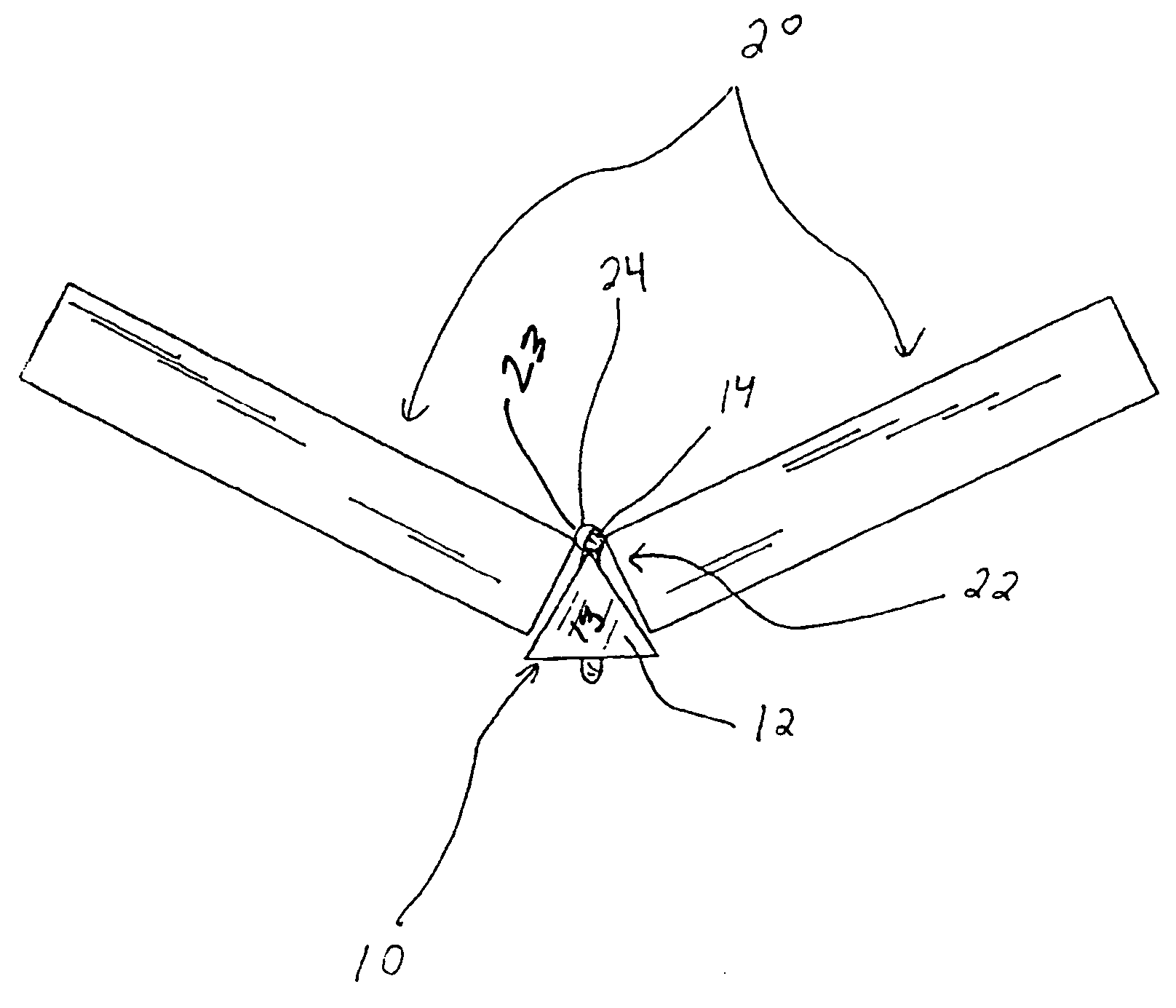Hinged door safety device
- Summary
- Abstract
- Description
- Claims
- Application Information
AI Technical Summary
Benefits of technology
Problems solved by technology
Method used
Image
Examples
Embodiment Construction
[0027]FIG. 1 disclose a safety device 10 for use with a door panel hinged to another door element such as another door or to a door frame or jamb for relative swinging motion of the door panel. FIGS. 2 and 3 disclose the device 10 in use with a bi-folding door where like door panels 20 comprise both elements of the hinged assembly.
[0028]FIGS. 1-3 disclose that the safety device 10 includes a block 12 sized and configured to insert into a triangular space 22 formed between the door panels 20 when the door panels are in a non-closed position. A ligature in the form of a resilient strap 14 having two segments 14a, 14b each having free ends secures the block 12 to the door assembly by looping around a hinge 24. A connector 18 of conventional buckle type (although any conventional connector appears to be appropriate e.g. hook and loop (e.g. Velcro®), snap, or the like) secures the free ends of the straps 14a, 14b together to secure the loop. The free ends could also be simply knotted to...
PUM
 Login to View More
Login to View More Abstract
Description
Claims
Application Information
 Login to View More
Login to View More - R&D
- Intellectual Property
- Life Sciences
- Materials
- Tech Scout
- Unparalleled Data Quality
- Higher Quality Content
- 60% Fewer Hallucinations
Browse by: Latest US Patents, China's latest patents, Technical Efficacy Thesaurus, Application Domain, Technology Topic, Popular Technical Reports.
© 2025 PatSnap. All rights reserved.Legal|Privacy policy|Modern Slavery Act Transparency Statement|Sitemap|About US| Contact US: help@patsnap.com



